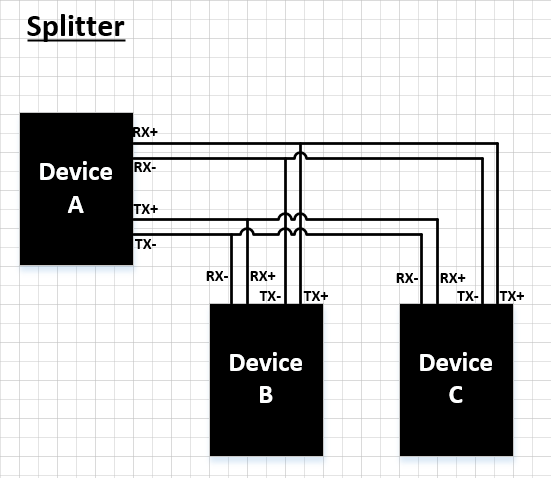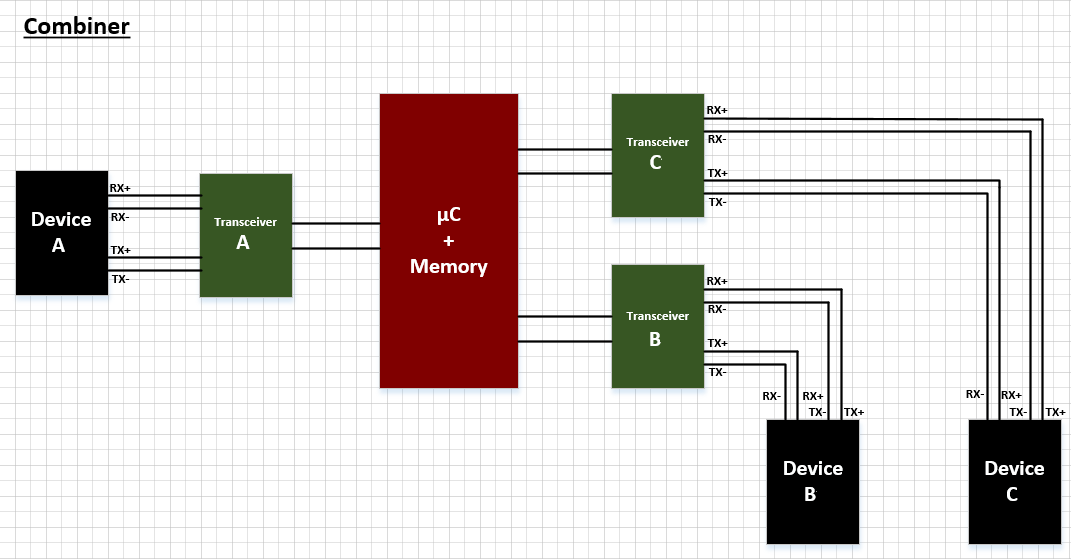Hi
Need to combine 2 lines of RS422 to 1 line RS 422
enclosed a file
This thread has been locked.
If you have a related question, please click the "Ask a related question" button in the top right corner. The newly created question will be automatically linked to this question.
Hi Haim,
That's an interesting question. I think if you wanted something that were truly RS-422 compatible at all of the interfaces, the best approach would be the obvious one of using two RS-422 receivers, an OR gate (or equivalent circuit using diodes, etc.), and an RS-422 transmitter.
If there is a lot of margin in the application (i.e., if the distances are short and the signal swing is really 0 V to +5 V as shown in the attachment) and you do not need full standards compliance, then you may be able to get a passive circuit to work. Here is one idea:
This should give a high-level output on C if either A or B are sending a logic high and a low-level output otherwise. It is non-ideal, though, since the diodes will cause some drop in voltage and it is not possible to properly terminate the output. The pull-up and pull-down resistors would need to be much weaker than a typical termination resistance, so if terminated the low-level differential voltage would be closer to 0 V than the desired -5 V.
Regards,
Max
Haim,
The circuit will not need to be very close to system and get better performance using SN75C1167
Like this.
For the discrete solution simulation, try TI Tina . Use Schottky diode
Thank you Max for the confirmation.
Actually, I need to do an RS422 splitter (1 to 2) and RS422 combiner (2 to 1). So there would be 3 devices in the network. I can't figure out how to connect all together.
- Splitter:
I need to split a signal from device A to device B&C, which is easy considering it is RS422.

- Combiner:
I need to combine signals form device B&C to device A. And here is the problem (there can be only one emitter in RS422)

The questions are:
Can I solve this problem putting a microncontroller+memory between device A and device B&C, so I can combine the frames one after the others? Would it affect the splitter side?
Or do I absolutely need to have two separate networks:
- One "splitter" network between 3 independant devices (A to B&C)?
- One "combiner" network between 3 other independant devices (B'&C' to A')?
And what about the termination resistors?
My mind is not really clear about it. Thank you for any advices/tips.
Kevin.